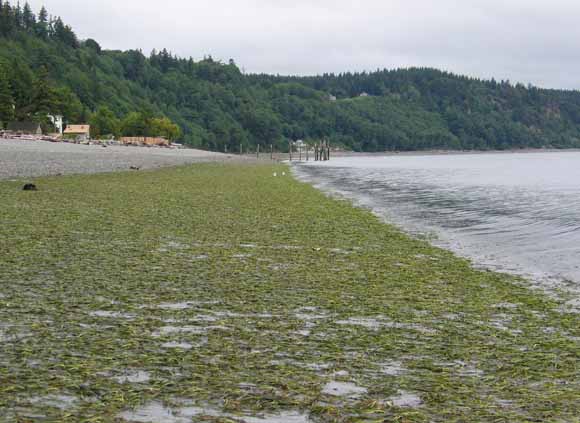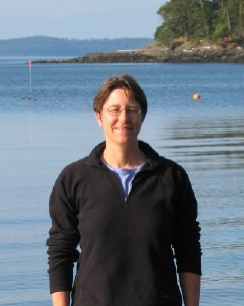
Presents
Location: Stanford University
This will be the 428th meeting since 1954

The distribution of aquatic vegetation such as eelgrass is influenced by physical attributes of its habitat, and in turn, aquatic vegetation can modify components of its physical environment. We are investigating the influence of the eelgrass Zostera marina on currents and waves, as well as the role of wave energy in limiting eelgrass distribution, in Puget Sound. This talk will cover several aspects of the project. The first is the testing and refining of a method for acoustic mapping of eelgrass distribution and density. The resulting high-resolution maps of eelgrass coverage and bathymetry are a critical component of investigation of physical controls on eelgrass distribution. The second component is an analysis of the influence of eelgrass on near-bed currents, mixing, and bed drag, based on velocity profiles measured in eelgrass meadows in the San Juan Islands. Currents were significantly attenuated, and canopy drag was a minimum of four times greater than for a sandy sea floor. Next, I discuss the attenuation of waves by eelgrass, using observations from a high-energy shoreline in Puget Sound, just north of Possession Point on Whidbey Island. In the final topic, spatially explicit wind-wave modeling and mapped eelgrass distribution are combined, to address the role of wave energy in limiting the landward edge of eelgrass coverage at the Possession Point site.

Jessie Lacy
Jessie Lacy is a physical oceanographer in the Pacific Coastal and Marine Science Center of the US Geological Survey. She conducts research in hydrodynamics and sediment transport in estuaries and coastal waters. Her research interests include the influence of complex bathymetry on circulation and mixing; the interaction of bedforms, waves and currents, and sediment transport; interaction between aquatic vegetation and hydrodynamics; and understanding the role of the physical environment in defining habitat function in aquatic systems. Jessie received her PhD in Civil and Environmental Engineering from Stanford University.
Contact: jlacy@usgs.gov
See a video featuring my work in San Francisco Bay: http://www.youtube.com/watch?v=L14qlo_HU8Y

Reservations: The preferred way to make reservations is simply to email Mike Diggles at mdiggles@usgs.gov by Dec. 7, tell him you will attend, commit to pay, and bring your payment to the meeting. Mike always emails a confirmation; if you don’t get one, assume email crashed yet again and email him a second time. A check made to “PGS” is preferred, payable at the meeting.
If you want to pay in advance:
Everyone (including Stanford folks now) Please make dinner reservations by Dec. 7. Contact Mike Diggles, at U.S. Geological Survey, 345 Middlefield Road, MS-951 Menlo Park, CA 94025, Tel.: (650) 329-5404. Send check made out to “PGS” to Mike.
Dinner and the social hour is $35.00; this includes $5 that we use to help pay for students who are only $8.00 (also partially subsidized thanks to the School of Earth Sciences, Stanford University (Note, no-show reservations owe the full price).
Doris, whose wonderful crew prepares our meals, asked that we let you know that people who are late RSVPing and people who show up without a reservation will be welcome but that they will be eating on paper plates with plastic utensils (food supply permitting).
Dues for Academic Year 2011-2012 ($10.00) should be sent to Mike Diggles, U.S. Geological Survey, 345 Middlefield Road, MS-951, Menlo Park, CA 94025. Mike’s phone: (650) 329-5404.
Officers: Mireya Berrios, President; Joe Colgan, Vice President; Mike Diggles, Secretary-Treasurer; Elizabeth Miller, PGS Stanford University Coordinator

Date created: November 28, 2011
Last modified: November 28, 2011
Created by: Mike Diggles, Webmaster-Secretary-Treasurer, PGS.